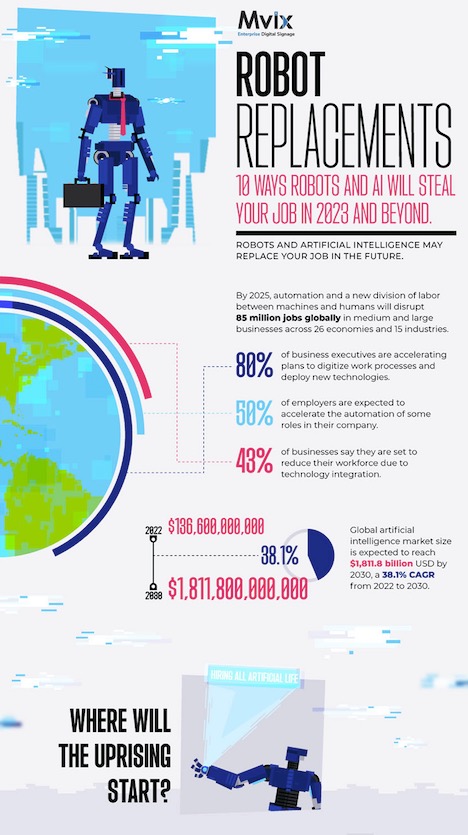
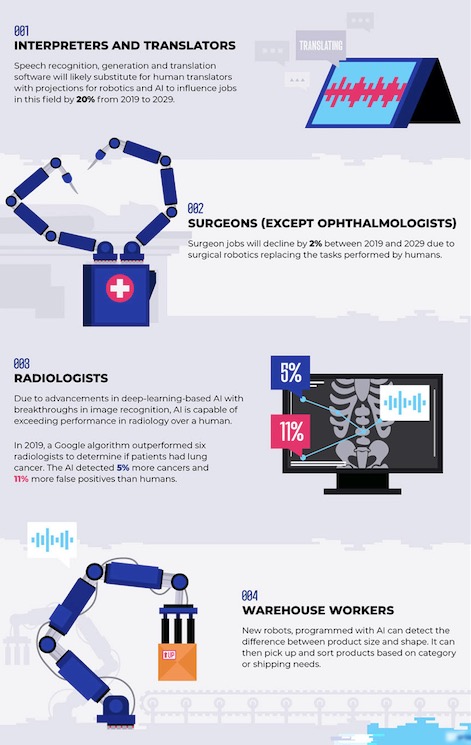
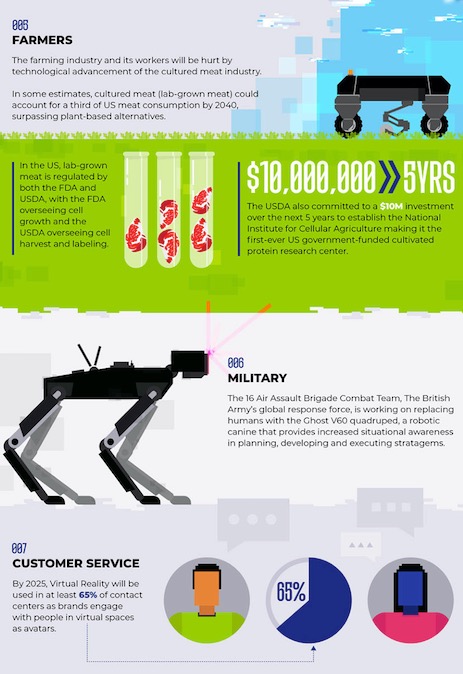
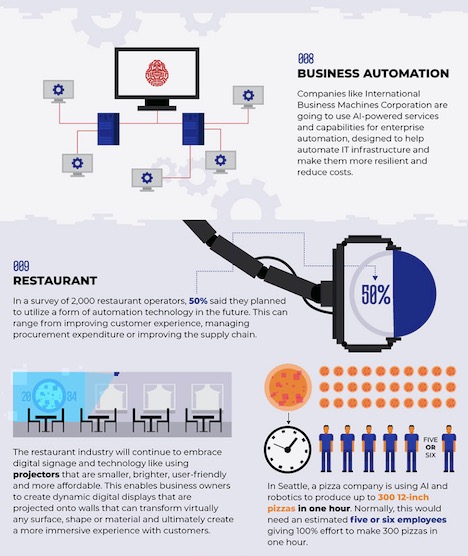
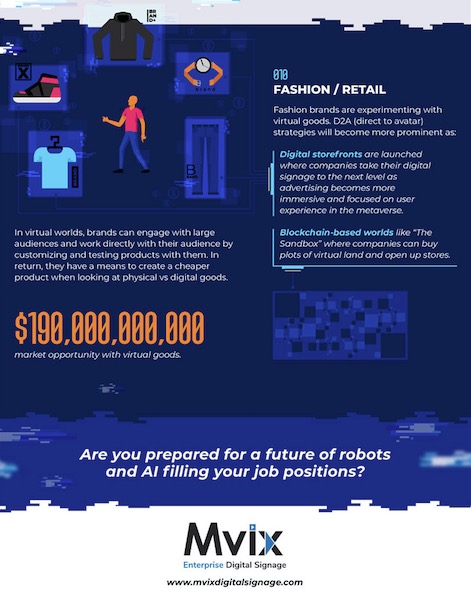
The Robot Revolution is inevitable, as intelligent automation solutions are entering numerous industries to streamline workflows and support complex tasks. The COVID epidemic provided the critical impulse towards technologically mediated human interaction. The AI market is expected to expand more than tenfold in the coming decade to an astounding $1.8 trillion.
These radical changes will happen the soonest in language-related professions. In fields such as translation and content writing, we can expect 20% of jobs to be affected in the near future.
As customer service moves to the metaverse, it’s possible that 65% of brands will help their customers through avatars in a virtual-reality setting by 2025.
The latest generation of pick-and-place robots is equipped with sophisticated artificial intelligence routines. This enables them to detect and sort products in warehouses or provide a helping hand in logistics and manufacturing environments.
We will increasingly witness quadrupedal robots assist in emergency response missions. These ground drones that resemble insect-dog crossovers have such sophisticated motor control that their gait almost seems natural. It renders them especially useful for high-risk tasks in challenging environments.
With the advent of lab-grown foods, synthetic meat can take up a third of all meat consumption by 2040. It’s no surprise that multinational restaurant franchises are looking into solutions to robotize their food preparation — the mechanical chef can work faster, tirelessly, and with ultimate precision.
In restaurants, airports, brick-and-mortar retail, waiting rooms, and movie theaters, interactive digital signage will become increasingly important to add a new level of immersion with fully customizable and dynamic content.
To boost the metaverse’s user experience with digital storefronts, an entirely new expertise is emerging: direct-to-avatar (D2A) marketing. Companies can even accelerate product development by testing their concepts with real customers in virtual reality.
Not only would people use VR to try out new products, such as jewelry, apparel, home décor, and smartphones, but they can also customize items to their specific needs. They could also preview them in their own settings using augmented reality (AR) features.
As the capabilities of AI-powered software reach far beyond that of taking over repetitive tasks, creative and white-collar professions will be affected by this rapidly maturing technology.
Current-day AI bots are smart enough to emulate lifelike human voices, which is already useful for speech-based interaction for various information systems like Siri and Alexa. But in the near future, even voiceovers, audiobooks, and music can be produced using artificial agents, unabashedly cutting the human performer out of the loop.
Other fields that are being disrupted by the power of AI are art, design, finance, legislation, journalism, real estate, programming, and data analysis.
High-skilled jobs are the last to go, but even a minor share of surgery-related jobs will be taken over by surgical robots. Since the artificial eye is turning out to be sharper than the radiologist’s in most cases, we can expect most medical procedures to be affected by automation and AI in one way or another.
All in all, 85 million jobs will see a fundamental redressing of balance between human workers and intelligent machines to an almost 50-50 ratio. A staggering 43% of businesses are also expecting to reduce their workforce in the near future. For more stupefying statistics that surround the topic of workplace automation, check the infographic above.



